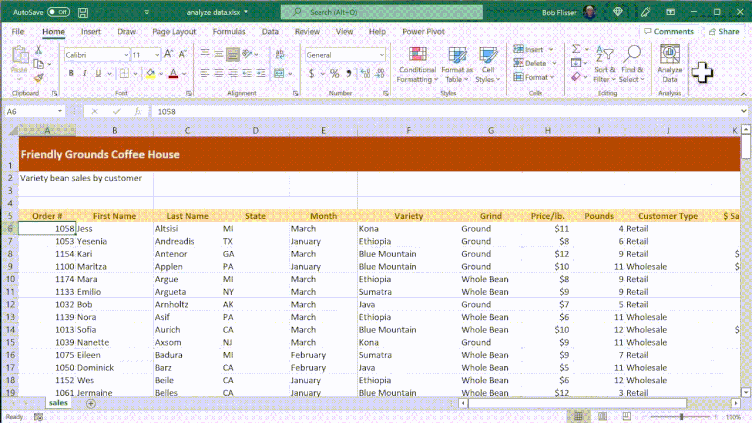Rethinking Restrictions on AI Tools in the Workplace
Innovation at Risk?

It’s a crisp morning as I sit down at my desk, cup of coffee in hand, ready to face the day’s challenges. As a Product Owner, my work is anything but mundane, and every day holds a new set of puzzles to solve. But recently, there’s been a cloud hanging over my morning ritual that I’ve found increasingly difficult to ignore. It’s not an impending deadline or a problematic feature; it’s something much broader, with implications reaching far beyond my projects or even our organization. It’s the restrictions on the use of AI tools in the workplace that have become increasingly prevalent.
My concern is not rooted in a resistance to change or an unhealthy attachment to the ways of the ‘good old days’, where we can use cutting edge AI without restriction. Rather, it’s based on the notion that these new rules on AI use, particularly with Large Language Models (LLMs), could inhibit innovation and growth in our rapidly advancing tech industry. These restrictions, while aimed at addressing valid concerns regarding privacy and proprietary data, have the potential to cause more harm than good, inadvertently stunting the creative and innovative capacities of our workforce.
For those unfamiliar with the concept, LLMs are AI tools capable of performing a variety of tasks, both technical and non-technical. For us tech folks, these AI tools, like Github Copilot, have been a godsend, removing the necessity of boilerplate code, aiding in code review, and even helping to create context-specific unit tests. Non-technical workers, too, have found immense value in these tools, with applications ranging from automatic data analysis in Excel 365 to generating Minutes of Meetings in video chats.
The recent regulations put in place against the use of these tools are undoubtedly grounded in concerns about data privacy and the proprietary nature of the work we do. But I believe there’s a way to navigate these issues without outright restricting access to these game-changing tools, a solution that lies in leveraging the services of AI tool providers who are already sharing data centers with us.

Navigating the modern world of technology is a delicate balance. On one hand, we have the promise of innovation and efficiency that AI brings; on the other, there are legitimate concerns about data privacy and the proprietary nature of our work. This balancing act has led to the imposition of restrictions on AI tools in the workplace, a move that, in my opinion, carries unintended risks that might outweigh its benefits.
The driving force behind these restrictions is the apprehension about proprietary data being shared with third-party companies who run the LLM models. While this fear is understandable, the solutions that have been proposed – to restrict the use of AI tools altogether – may be throwing the proverbial baby out with the bathwater.
One immediate risk that springs to mind is the stifling of creativity and innovation. The tools that have become a part of our daily workflow do more than just automate tasks – they stimulate creative thinking and spur innovation by freeing up time and mental space. By imposing restrictions on their use, we are inadvertently hampering this creativity and curtailing the potential growth that comes with it.
A second, perhaps less obvious, risk is the creation of a potential security loophole. With the restrictions in place, experts and engineers who have become accustomed to the convenience and efficiency of these tools may find ways to circumvent these rules. This could involve transferring code or other sensitive material to unmonitored, personal devices to take advantage of the AI tools, before transferring it back into the work environment.
Not only does this introduce more risk to our proprietary products, it also puts a strain on our team members, who are now burdened with the task of manually doing work that was previously automated. The crux of the issue, and the irony of the situation, is that the effort to use another machine is considered less labor-intensive than performing tasks manually – a clear indicator that the push to restrict LLM use in the workplace may be more harmful than helpful.

It’s clear that the use of AI tools in the workplace brings undeniable benefits. Yet, we must also recognize and address the potential risks. This begs the question, how do we strike a balance? How can we reap the benefits of AI tools while also safeguarding our proprietary data and maintaining privacy?
One possible solution is to focus on licensing and using tools provided by companies we already share a data repository with. In this digital age, it’s not unusual for companies to have their data stored across various platforms, often owned by third-party corporations. If we can align our use of AI tools with these existing repositories, we can alleviate the risks associated with sharing data with additional external parties.
Consider Microsoft, for example. If your company’s codebase resides on Azure DevOps or GitHub, it’s worth noting that your proprietary code is already in the same data center as AI tools like GitHub Copilot or Azure’s OpenAI services, all of which fall under the Microsoft umbrella. By tapping into these AI tools, you’re not really introducing a new entity into the equation, but rather making the most out of an existing relationship.
Similarly, non-technical AI tools like Excel 365’s data analysis features, Teams' automatic Minutes of the Meeting, and even co-writing AI tools for emails and documentation, all fall under this same umbrella. The use of these tools should not introduce any additional risk to the security of your data as long as it’s managed properly.
However, unrestricted use does not mean unmonitored use. Even with the alleviation of privacy concerns, organizations should still have guidelines in place for the use of AI tools. This can include regular audits, data access controls, and employee education about the responsible use of AI.
The goal here is to create an environment where AI can be used freely and safely. By doing this, we not only foster creativity and innovation but also ensure that our data remains secure.

As we look to the future, the role of AI in the workplace becomes more and more pronounced. It’s not a question of if, but rather when and how we fully integrate AI tools into our work processes. The future I envision is one where these tools are not just allowed but embraced; a future where we harness their potential to drive creativity and innovation, all while ensuring the safety and privacy of our data.
The idea isn’t to replace human talent or effort, but to augment it. AI tools can take care of the routine, mundane aspects of our jobs, leaving us with more time and energy to tackle the complex, creative problems that require a human touch. This shift in focus could lead to unprecedented levels of innovation and productivity, transforming the very nature of work as we know it.
However, as we usher in this new era, it’s important that we tread carefully, balancing the unrestricted use of AI tools with strict guidelines and regulations to ensure data security. Unrestricted doesn’t mean unregulated – on the contrary, it calls for a well-structured framework that facilitates safe and ethical AI usage.
In the era of rapid technological advancement, let us remember that the power of AI is not just in its capacity to automate, but in its potential to liberate human creativity. It’s not about replacement, but about enhancement, leading us towards a future where technology and human ingenuity walk hand in hand.
In conclusion, the rise of AI tools in the workplace is a testament to our relentless pursuit of innovation and efficiency. While the concerns surrounding data privacy and security are valid, I believe that the outright restriction of these tools can lead to unintended consequences that might outweigh the perceived benefits.
Instead, we should strive to find a middle ground – allowing the use of AI tools while implementing necessary safeguards. We can do this by utilizing AI tools provided by the same third-party corporations we already entrust our data with and putting in place stringent guidelines and regulations for AI usage.
The road to integrating AI into the workplace may be a complex one, filled with challenges and obstacles, but it’s a journey worth undertaking. For at the end of this road, we stand to gain a workspace that’s not just more efficient and productive, but also more creative and innovative.
Note: This was first published as a LinkedIn article.
